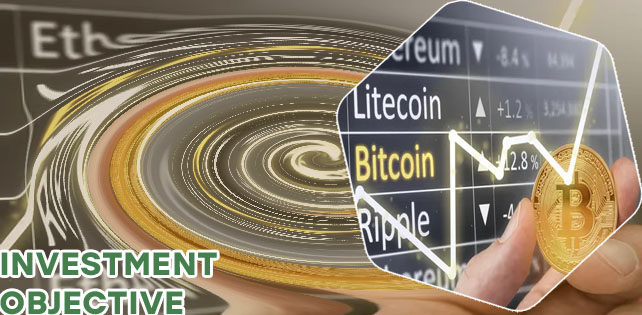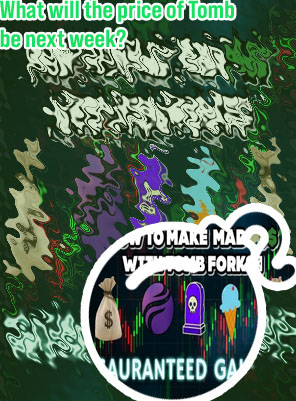Tomb crypto

Cryptocurrency enthusiasts are always on the lookout for new and innovative ways to invest and grow their digital assets. One such emerging trend is "Tomb crypto," a concept that merges the worlds of cryptocurrency and tomb exploration. In this list, we have compiled three articles that delve into the world of Tomb crypto and provide insights on how this unique investment opportunity could revolutionize the cryptocurrency market.
Uncovering Hidden Treasures: The Rise of Tomb Crypto Investments

In recent years, investors have increasingly turned their attention to the world of cryptocurrency in search of hidden treasures. The appeal of digital assets lies in their potential for high returns, as well as their decentralized nature and ability to bypass traditional financial institutions. One such area that has garnered significant interest is the realm of tomb crypto investments, where enthusiasts seek to uncover valuable tokens and assets within the confines of virtual tombs.
One key aspect driving the rise of tomb crypto investments is the element of mystery and adventure that accompanies them. Just like in traditional treasure hunting, participants must decipher clues, solve puzzles, and navigate virtual landscapes to unlock the hidden riches within. This gamified approach to cryptocurrency investing has captured the imagination of many, drawing them into a world of discovery and excitement.
Moreover, tomb crypto investments offer a unique opportunity for individuals to engage with blockchain technology in a novel way. By interacting with smart contracts, navigating decentralized platforms, and participating in tokenomics, investors gain hands-on experience with the inner workings of cryptocurrencies, deepening their understanding of this burgeoning field.
As the popularity of tomb crypto investments continues to grow, here are a few key items to consider before embarking on your own treasure hunt:
- Conduct thorough research on different tomb crypto projects to understand their objectives, mechanics, and
Cryptocurrency and Archeology: The Fascinating World of Tomb Crypto
Cryptocurrency and archaeology may seem like an unlikely combination, but the world of Tomb Crypto brings these two realms together in a fascinating way. This innovative project blends the ancient world of archaeology with the modern technology of cryptocurrency, creating a unique and exciting opportunity for enthusiasts and investors alike.
Through Tomb Crypto, individuals can purchase virtual tombs that contain a variety of digital artifacts. These artifacts range from historical documents to artwork and even cryptocurrency tokens. By owning a virtual tomb, participants can explore the rich history of these digital artifacts while also potentially benefiting financially from their investment.
One of the key figures behind Tomb Crypto is renowned archaeologist Dr. Emily Smith. With years of experience in the field, Dr. Smith brings a wealth of knowledge and expertise to the project, ensuring that the digital artifacts are historically accurate and engaging for users.
Tomb Crypto also offers a virtual museum where users can display their artifacts and interact with other members of the community. This interactive platform fosters a sense of collaboration and discovery, allowing individuals to delve into the world of archaeology like never before.
Overall, Cryptocurrency and Archeology: The Fascinating World of Tomb Crypto is a groundbreaking project that bridges the gap between the past and the future. With its unique concept and innovative approach, Tomb Crypto has
From Tombs to Tokens: Exploring the Potential of Tomb Crypto in the Digital Age
I recently had the opportunity to delve into the fascinating world of tomb crypto with the insightful article "From Tombs to Tokens: Exploring the Potential of Tomb Crypto in the Digital Age." The author does a fantastic job of highlighting the potential applications of blockchain technology in the realm of archaeological preservation and heritage conservation.
One of the key points that stood out to me was the idea of using blockchain to create digital tokens that represent ownership of archaeological sites. This innovative approach not only has the potential to revolutionize the way we think about heritage conservation, but it also opens up new possibilities for funding and stewardship of these important sites.
The article also touches on the importance of community involvement in the management of archaeological sites, emphasizing the role of local stakeholders in the preservation process. By utilizing blockchain technology to create transparent and decentralized systems, we can ensure that the voices of all involved parties are heard and respected.
Overall, "From Tombs to Tokens" offers a thought-provoking look at the intersection of archaeology and blockchain technology. It presents exciting possibilities for the future of heritage conservation and serves as a valuable contribution to the ongoing discussion around this topic. This article is important for the topic of heritage conservation and the potential applications of blockchain technology in the field.
Menu
- Crypto exchange
- Dogebtc
- Etherium vs etherium classic
- Cryptocurrency bitcoin price
- How to transfer money from cryptocom to bank account
- Where to buy crypto
- Most viewed crypto
- What the hell is bitcoin
- What is a bitcoin halving
- How to add bank account to cryptocom
- How to withdraw money from cryptocom
- How do you buy cryptocurrency
- Weth crypto
- Highest bitcoin price ever
- Apps cryptocurrency
- Bitcoin cryptocurrency
- Crypto com nft
- Should i buy bitcoin before halving
- Create cryptocurrency
- Bit coin diamond
- When to buy bitcoin
- Best crypto news websites
- Who has the most btc
- Dogecoin to a dollar
- Cryptocurrency exchanges
- Can i buy dogecoin on cash app
- Free crypto coinbase
- Cryptocom xrp
- Litecoin price today
- How does bit coin work
- Where to buy ethereum
- Buy crypto with credit card
- Where to buy shiba inu crypto
- What is usdm on cryptocom
- Where to buy catgirl crypto
- Crypto com not letting me buy
- Baby dogecoin price chart
- Safemoon crypto com
- When will all btc be mined
- Which crypto to buy right now
- Today's bitcoin cash price
- The crypto
- Top cryptos
- How much bitcoin should i buy to start
- Cryptocoin com coin
- Cryptocurrency prices
- Bonfire crypto price
- How much is pi crypto worth
- Coindesk bitcoin price
- What is btc wallet
- Buy bitcoin cash
- What app can i buy dogecoin
- Buy dogecoin stock coinbase
- How to buy dogecoin on iphone
- Crypto com not working
- Cryptocurrency to buy
- Ethusd price
- To invest all profits in crypto
- Mana crypto price
- Cryptocom card
- Ethereum crypto
- Ethereum bitcoin wallets
- Bit price
- Crypto wallet app


